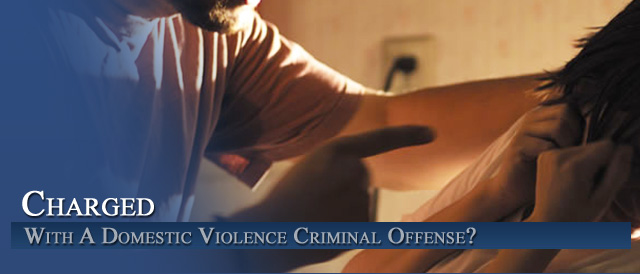



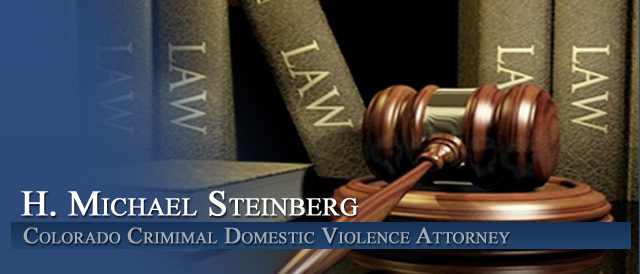
2016 Colorado – When Does Texting – Calling – Become Harassment? 18-9-111
By H. Michael Steinberg Colorado Domestic Violence Criminal Defense Lawyer
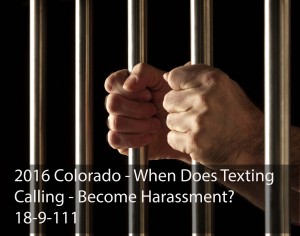 2016 Colorado – When Does Texting – Calling – Become Harassment? 18-9-111 – Many of my clients are charged with Harassment under Section 18-9-111 of the Colorado Revised Statutes. There are several ways to be charged with harassment under this law and the law itself is amended often.
2016 Colorado – When Does Texting – Calling – Become Harassment? 18-9-111 – Many of my clients are charged with Harassment under Section 18-9-111 of the Colorado Revised Statutes. There are several ways to be charged with harassment under this law and the law itself is amended often.
This article, is an update and somewhat unlike others I have written. This article closely looks at the law as of 2016. The approach I take is to examine the language of the actual law itself. I encourage all to read the law and not rely on the words of others in other contexts.
The Colorado Harassment statute has been attacked on constitutional grounds many times over the years based on violations of prohibiting free speech. It is easy to understand why – a careful study of the language of the statute and the jury instructions that I include below (used at trial to instruct the jury on the law) demonstrates how close the law comes to restricting – known as “chilling” the exercise of one’s rights under the First Amendment
Here is the law as of 2016 – with my comments interwoven as [HMS – …….]
18-9-111 Colorado Harassment
[HMS – EVERY section is the law – every way the law can be violated – requires the application of section (1) FIRST. For the crime to occur there must be an intent to harass,annoy or alarm another person]
(1) A person commits harassment if, with intent to harass, annoy, or alarm another person, he or she:
[HMS – a charge under (1) (a) is the most common among all of the many ways to committ the crime – it involves some form of phsyical violence -I call it the “strike, shove, kick section” – it is often charged where the alleged victim of the crime says they felt no pain… If the alleged victim felt pain – the charge is Third Degree Assault)
(1)(a) Strikes, shoves, kicks, or otherwise touches a person or subjects him to physical contact;
or
[HMS – the next section addresses the most direct of the threats to free speech – the term “obscene” is defined below – later in the statute.]
(1)(b) In a public place directs obscene language or makes an obscene gesture to or at another person;
or
[HMS – This section is obvious- it amounts to essentially stalking like behavior -]
(1)(c) Follows a person in or about a public place;
or
….
[HMS – This is the section which must be read closely with section (1) – involves the typical non-physical harassment – it involves what can be called “electronic communications:” – examples include texting – Facebook, Twitter, and anonymous messages left on voicemail.]
(1)(e) Directly or indirectly initiates communication with a person directs language toward another person, anonymously or otherwise, by telephone, telephone network, data network, text message, instant message, computer, computer network, computer system, or other interactive electronic medium in a manner intended to harass or threaten bodily injury or property damage, makes any comment, request, suggestion, or proposal by telephone, computer, computer network, computer system, or other interactive electronic medium that is obscene;
or
[HMS – Colorado criminal harassmnt under Section 18-9-111 (1)(f) – is designed for the middle of the night phone calls which are made soley to annoy another.]
(1)(f) Makes a telephone call or causes a telephone to ring repeatedly, whether or not a conversation ensues, with no purpose of legitimate conversation;
or
[HMS – 18-9-111 Section (1)(g) – is a generic – often challenged section that is a “kitchen sink” section designed to address repeated communications of any kind “that invade the privacy of another…”]
(1)(g) Makes repeated communications at inconvenient hours that invade the privacy of another and interfere in the use and enjoyment of another’s home or private residence or other private property;
or
[HMS – Finally Colorado cirminal law 18-9-111 Section (1)(h) -is customarily referred to as the “fighting words” law – where the harassment takes the form of communications intended to provoke a violent response and cross the line into unpretected speech under the First Amendment. “Fighting words” addressed to another person, (2) consists of insults, taunts, or challenges, (3) repeatedly made, and (4) with the intent to harass, annoy, or alarm another person.]
(1)(h) Repeatedly insults, taunts, challenges, OR makes communications in offensively coarse language to, another in a manner likely to provoke a violent or disorderly response.
(1.5) As used in this section, unless the context otherwise requires, “obscene” means a patently offensive description of ultimate sexual acts or solicitation to commit ultimate sexual acts, whether or not said ultimate sexual acts are normal or perverted, actual or simulated, including masturbation, cunnilingus, fellatio, anilingus, or excretory functions.
(2) Harassment pursuant to subsection (1) of this section is a class 3 misdemeanor; except that harassment is a class 1 misdemeanor if the offender commits harassment pursuant to subsection (1) of this section with the intent to intimidate or harass another person because of that person’s actual or perceived race, color, religion, ancestry, or national origin.
(3) Any act prohibited by paragraph (e) of subsection (1) of this section may be deemed to have occurred or to have been committed at the place at which the telephone call, electronic mail, or other electronic communication was either made or received.
….
(7) Paragraph (e) of subsection (1) of this section shall be known and may be cited as “Kiana Arellano’s Law”.
(8) This section is not intended to infringe upon any right guaranteed to any person by the first amendment to the United States constitution or to prevent the expression of any religious, political, or philosophical views.
Some Colorado Cases Interpreting Section 18-9-111 CRS
The basic nature of the crime of harassment is the “thrusting of an offensive and unwanted communication on one who is unable to ignore it.” While the law addresses many areas of human contact – the Colorado Courts of Appeal have repeatedly struck down sections of the law as impermissible limitations on free expression.
“Annoy” in this section means “to irritate with a nettling or exasperating effect”.
“Alarm” in this section means “to arouse to a sense of danger; to put on the alert; to strike with fear; fill with anxiety as to threaten danger or harm”.
“Repeatedly” is a word of such common understanding that its meaning is not vague. It simply means in the context of subsection (1)(h) that the defendant uses insulting, taunting, or challenging language more than one time.
Here Are The Broken Down Elements As Jury Instructions Of The Primary Harassment Colorado Crimes – Described In The Statutes Above
18-9-111 (1)(a) HARASSMENT (PHYSICAL CONTACT)
The elements of the crime of harassment (physical contact) are:
1. That the defendant,
2. in the State of Colorado, at or about the date and place charged,
3. with intent,
4. to harass, annoy, or alarm another person,
5. struck, shoved, kicked, or otherwise touched a person, or subjected him [her] to physical contact.
[6. and that the defendant’s conduct was not legally cholesterol lowering authorized by the affirmative defense[s] in Instruction[s] ___.]18-9-111 (1)(a) HARASSMENT (OBSCENE)
The elements of the crime of harassment (obscene) are:
1. That the defendant,
2. in the State of Colorado, at or about the date and place charged,
3. with intent,
4. to harass, annoy, or alarm another person,
5. in a public place,
6. directed obscene language at, or made an obscene gesture to, another person.
[7. and that the defendant’s conduct was not legally authorized by the affirmative defense[s] in Instruction[s] ___.]18-9-111 (1)(c) HARASSMENT (FOLLOW)
The elements of the crime of harassment (follow) are:
1. That the defendant,
2. in the State of Colorado, at or about the date and place charged,
3. with intent,
4. to harass, annoy, or alarm another person,
5. followed a person in or about a public place.
[6. and that the defendant’s conduct was not legally authorized by the affirmative defense[s] in Instruction[s] ___.]18-9-111 (1)(h) HARASSMENT (PROVOCATION)
The elements of the crime of harassment (provocation) are:
1. That the defendant,
2. in the State of Colorado, at or about the date and place charged,
3. with intent,
4. to harass, annoy, or alarm another person,
5. repeatedly insulted, taunted, challenged, or made communications in offensively coarse language to another,
6. in a manner likely to provoke a violent or disorderly response.
[7. and that the defendant’s conduct was not legally authorized by the affirmative defense[s] in Instruction[s] ___.]18-9-111 (1)(g) HARASSMENT (REPEATED COMMUNICATION)
The elements of the crime of harassment (repeated communication) are:
1. That the defendant,
2. in the State of Colorado, at or about the date and place charged,
3. with intent,
4. to harass, annoy, or alarm another person,
5. made repeated communications,
6. at inconvenient hours,
7. that invaded the privacy of another and interfered in the use and enjoyment of another’s home, private residence, or private property.
[8. and that the defendant’s conduct was not legally authorized by the affirmative defense[s] in Instruction[s] ___.]18-9-111 (1)(f) HARASSMENT (TELEPHONE)
The elements of the crime of harassment (telephone) are:
1. That the defendant,
2. in the State of Colorado, at or about the date and place charged,
3. with intent,
4. to harass, annoy, or alarm another person,
5. made a telephone call or caused a telephone to ring repeatedly,
6. whether or not a conversation ensued,
7. with no purpose of legitimate conversation.
[8. and that the defendant’s conduct was not legally authorized by the affirmative defense[s] in Instruction[s] ___.]18-9-111 (1)(e) HARASSMENT (COMMUNICATION)
The elements of the crime of harassment (communication) are:
1. That the defendant,
2. in the State of Colorado, at or about the date and place charged,
3. with intent,
4. to harass, annoy, or alarm another person,
[5. directly or indirectly initiated communication with a person +or directed language toward another person, anonymously or otherwise,6. by telephone, telephone network, data network, text message, instant message, computer, computer network, computer system, +or other interactive electronic medium,
7. in a manner intended to harass or threaten bodily injury or property damage.] [5. made any comment, request, suggestion, or proposal by telephone, computer, computer network, computer system, +or other interactive electronic medium,
6. that was obscene.] [_. and that the defendant’s conduct was not legally authorized by the affirmative defense[s] in Instruction[s] ___.]
How Would You Defend Against A Fraudulent Charge Of Harassment Under 18-9-111?
The key defense if you are charged under ANY section of Colorado’s Harassment law is to create reasonable doubt about the INTENT of the Defendant at the time of the communication. Harassment is called a “specific intent” crime – intent is a required element of Colorado’s Harassment statute – 18-9-11. The State must prove that the accused made the communication(s) for the purpose of harassing the victim.
It is not enought that the accused used profanity – the use of profanity alone does not constitute an intent to harass. Instead, a communication must disturb, irritate, or bother the victim to be considered to be harassing.
The Communication Must Be An Intentional – Not An Unintended Act
Using the “specific intent,” defense – your lawyer will argue at trial that the Defendant did or said something with no intent that the communication was meant to harass the victim – there was no intent to annoy or intimidate the victim – that is – the words used were never designed to provoke a fight for example.
A Quick Aside: Colorado Cyberbullying or Cyberstalking As A Form Of Harassment
The use of an electronic device such as a phone or computer to commit the Colorado crime of harassment was only recently added to the Colorado Harassment law. While the telephone and even email is included under the rubric “cyberbullying” the burgeoning of social networking sites such as Facebook and Twitter have changed the landscape.
Here Is A Summary Of Common Defenses to Colorado Harassment Charges Under Section18-9-111
Because the statute contains several different ways to allegedly commit the crime of harassment – there are many defenses to the Colorado harassment law 18-9-111 – they includem but are not limited to:
-
Was there actually a “communication” that was made? Can it be proven in court.
-
Was there any actual contact or threat made?
-
Was the communication in response to a more serious threat?
-
Did you really “intend” to annoy, harm or alarm anyone?
-
Was the communication “obscene” under the Colorado definition in the statute?
-
Was this communication protected under the Constitution – as an exercise in free speech?
-
There was a solid reason for the communication during inconvenient or unreasonable hours? Was it repeated because the circumstances demanded same?
-
Was there really a violation of the alleged victim’s “reasonable” expectation of privacy?
2016 Colorado – When Does Texting – Calling – Become Harassment? 18-9-111
If you found any of the information I have provided on this web page article helpful please click my Plus+1 or the Share buttons for Twitter and Facebook below so that others may also find it.
The reader is admonished that Colorado criminal law, like criminal law in every state and at the Federal level, changes constantly. The article appearing above was accurate at the time it was drafted but it cannot account for changes occurring after it was uploaded.
If, after reading this article, you have questions about your case and would like to consider retaining our law firm, we invite you to contact us at the Steinberg Colorado Criminal Defense Law Firm – 303-627-7777.
Never stop fighting – never stop believing in yourself and your right to due process of law. You will not be alone in court, H. Michael at your side every step of the way – advocating for justice and the best possible result in your case.
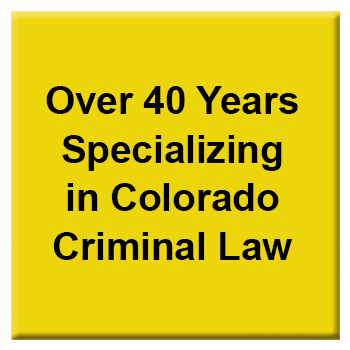
ABOUT THE AUTHOR: H. Michael Steinberg – Email The Author at [email protected] – A Denver Colorado Criminal Defense Lawyer – or call his office at 303-627-7777 during business hours – or call his cell if you cannot wait and need his immediate assistance – 720-220-2277. Attorney H. Michael Steinberg is passionate about criminal defense. His extensive knowledge and experience of Colorado Criminal Law gives him the edge you need to properly handle your case.
“A good criminal defense lawyer is someone who devotes themselves to their client’s case from beginning to end, always realizing that this case is the most important thing in that client’s life.”
You should be careful to make a responsible choice in selecting a Colorado Criminal Defense Lawyer – and we encourage you to “vet” our firm. Over the last 40 plus years – by focusing ONLY on Colorado criminal law – H. Michael has had the necessary time to commit to the task of constantly updating himself on nearly every area of criminal law, to include Colorado criminal law and procedure and trial and courtroom practice. H. Michael works hard to get his clients the best possible results in and out of the courtroom. He has written, and continues to write, extensively on Colorado criminal law and he hopes this article helps you in some small way – 2016 Colorado – When Does Texting – Calling – Become Harassment? 18-9-111.
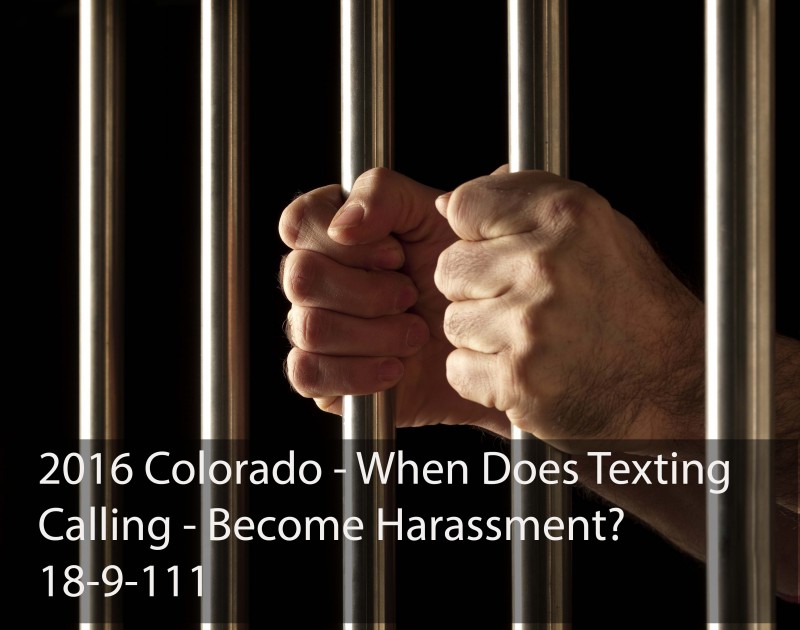
Other Articles of Interest:
- Colorado Stalking Laws 18-3-602 – To Convict, A Defendant Does Not Need To Know That The Alleged Victim Is Suffering Serious Emotional Distress
- Colorado Domestic Violence Law – False Reporting To Authorities – 18-8-111 – A Dangerous Law
- Electronic Cyberstalking And Colorado’s Domestic Violence “Stalking” Crimes – 18-3-602 CRS
- Understanding Colorado’s Pre-Sentence Credit Laws – Credit For Time Served – 18-1.3-405
- Colorado Domestic Violence Defense – The Bullying Girlfriend – Spouse and Colorado Domestic Violence Cases *












